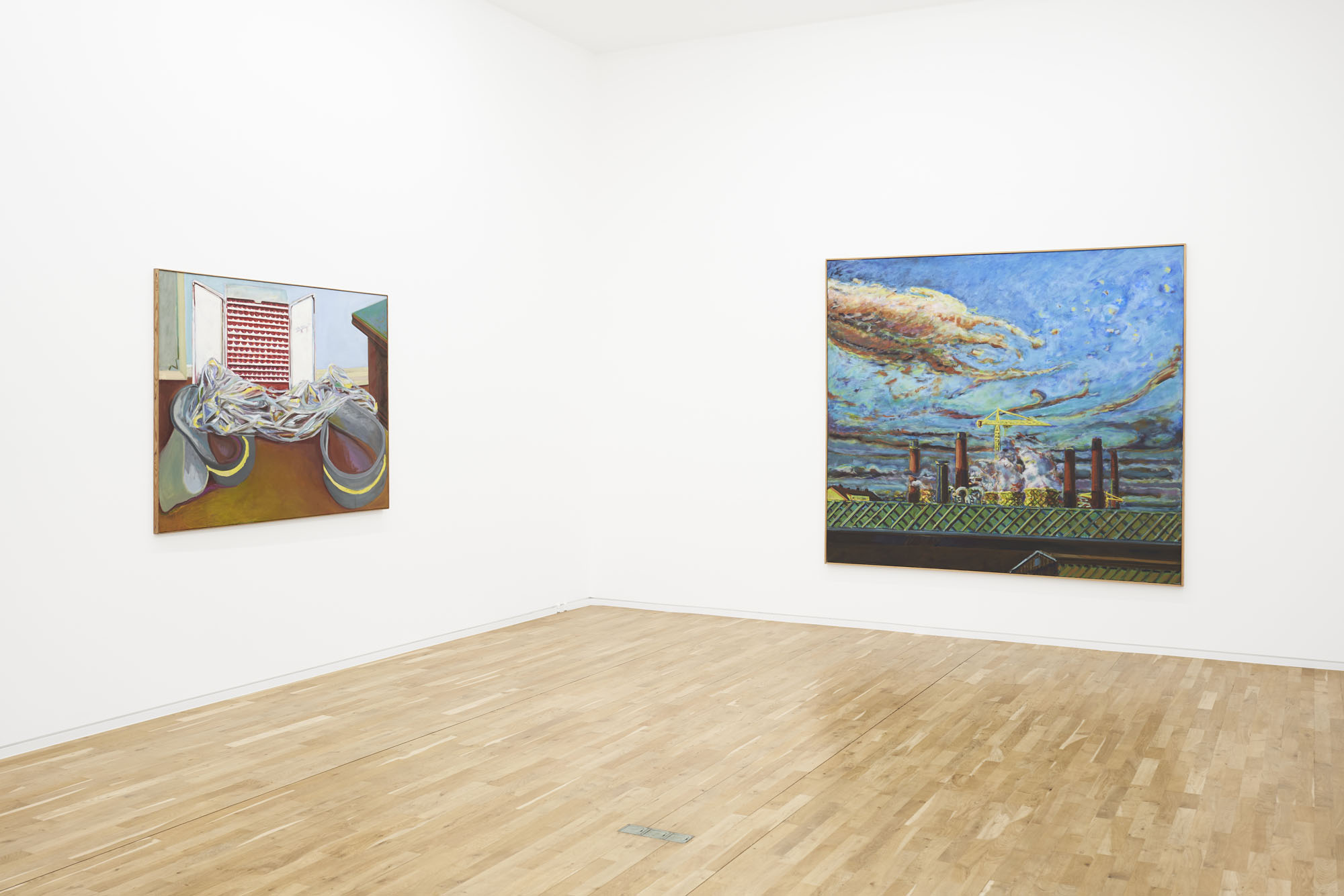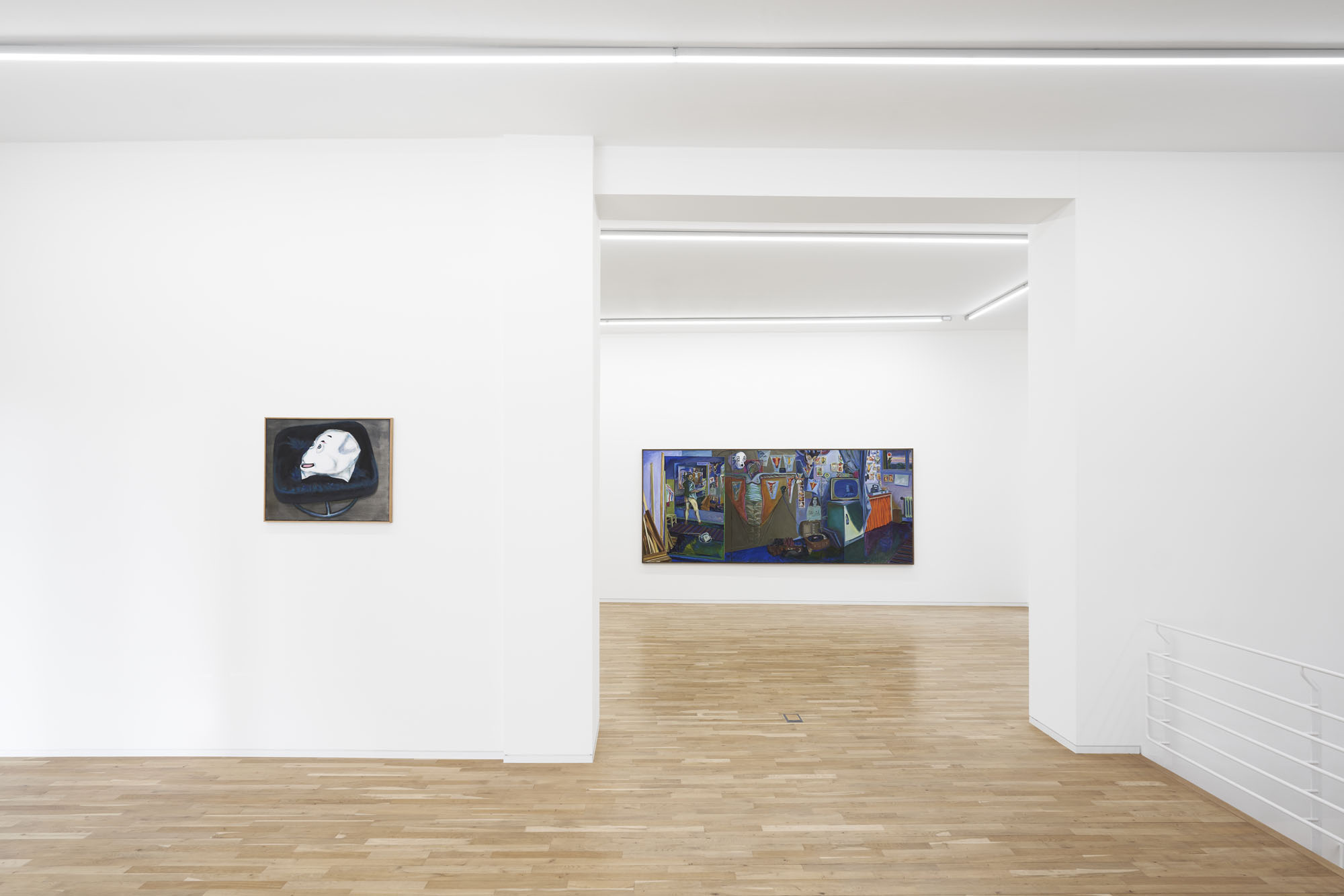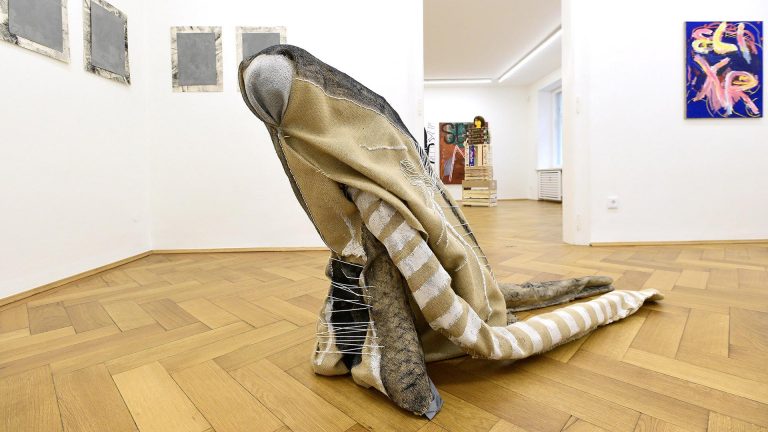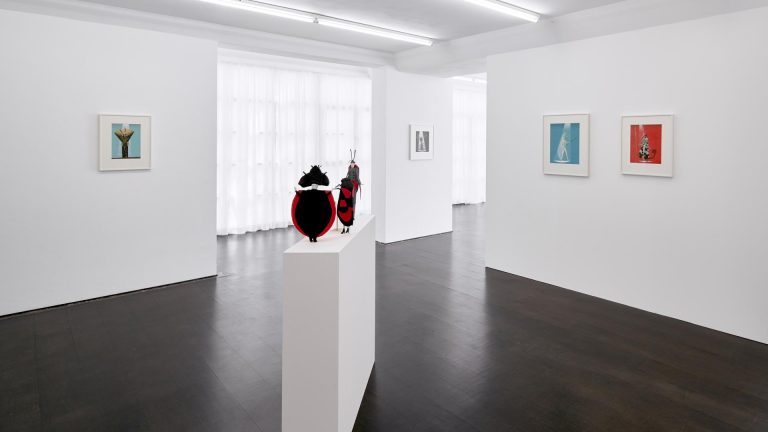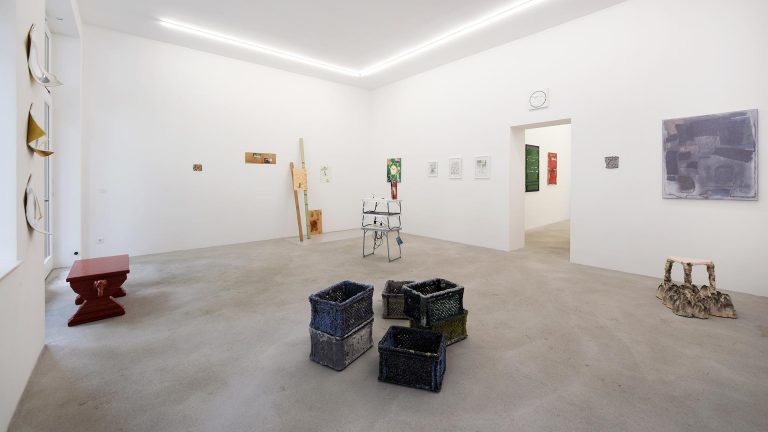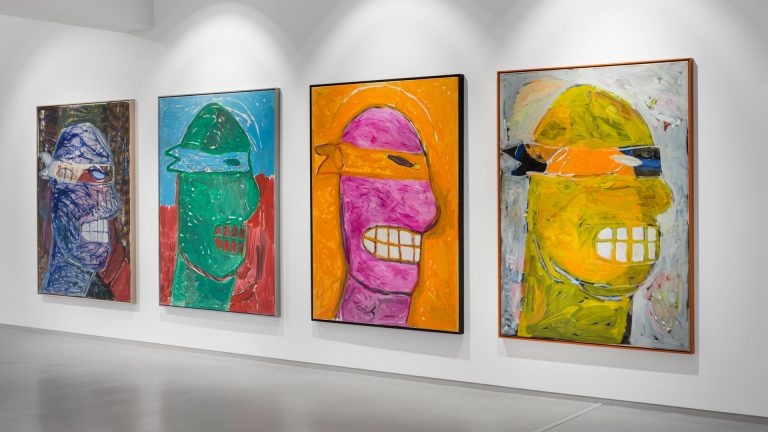Artist: Norbert Tadeusz
Venue: Jahn und Jahn, Munich, Germany
Date: January 23 – February 29, 2020
Photography: all images copyright and courtesy of the artist and Jahn und Jahn, Munich
Norbert Tadeusz’s primarily large-format paintings stand out not only due to an unusual intensity of color and light, but also as the result of a particular way of dealing with space, body, and composition. The monumental “Triptychon” (1973), shown in the exhibition, is thus defined by an expressive pictorial language and complex composition. Alongside furnishings and painting utensils, the studio scene depicted points at a mishmash of various objects, among them a telephone, records, and a pile of shoes. At the center of the work there is a female nude, presented as a crucified figure with cloth. Tadeusz revisits this motif several times in other works as well as in this triptych: It is the motif of the large painting in the central panel and in various smaller portraits which hang between a dog mask and antlers on the walls of the studio. This crucified female figure likewise appears in the left panel where the artist pushes the concept of a picture within a picture to its limits: A painting leans behind a heap of wooden frames, portraying the artist as a half-naked figure in front of his work, seen from behind (again with the crucifixion scene). Only after looking more closely does it become clear that Tadeusz has integrated a reflection at this point, opening up another space within the image. The principle of duplication verges on absurdity. At the same time, Tadeusz consistently breaks with traditional rules of perspective and as such challenges entrenched viewing habits. Viewers are confronted with a multi-layered spatial structure and countless cross-references that have to be discovered. It remains unknown, for example, if the right panel deals with a window or landscape painting.
Similar to the way a window functions as the threshold between inside and outside, painting – oscillating between reality and illusion – has been understood since Alberti’s treatise “De Pictura” (1435) as a “window to the world”. By depicting himself in his studio, the private sphere of art production, he focuses on painting itself. Contrary to prevailing artistic tendencies, represented by Conceptual Art, Pop Art or Minimalism of the 1960s, Tadeusz at no point deviated from figuration and – like other artists of his generation, such as Gerhard Richter or Sigmar Polke – developed his own, wholly distinctive style. His works draw from classical subjects: interiors, still lifes, nudes, and landscapes. From vacuum cleaners and bicycles to window views, he addresses banal everyday objects and observations as well as surreal sceneries, animal carcasses, or acrobatic acts. In his work, twisted poses and fleshy bodies confront strictly controlled areas with dominant drop shadows. The starting point for Tadeusz’s paintings are photographs and drawings which he combines and subjects to over-painting in his compositions. The artist, a former master’s student of Beuys, always attached great importance to the representation of bodies and space which he modeled with light, shape and color.
Norbert Tadeusz (1940 Dortmund – 2011 Dusseldorf) studied at the Kunstakademie Düsseldorf from 1961 to 1966, also teaching for the academy’s department in Münster in the 1970s and 1980s. Professorships followed at the Berlin University of the Arts (1988-1991) and the Braunschweig University of Art (1991-2005). His first institutional solo exhibition was at the Kunstmuseum Düsseldorf in 1970. Since then Tadeusz’s work has been shown in important museums, and currently in the Kunstpalast Düsseldorf. From May 2020 the Westphalian State Museum of Art and Cultural History (LWL-Museum für Kunst und Kultur) in Münster will host a solo show by the artist.
Norbert Tadeusz, 2020, exhibition view, Jahn und Jahn, Munich
Norbert Tadeusz, 2020, exhibition view, Jahn und Jahn, Munich
Norbert Tadeusz, 2020, exhibition view, Jahn und Jahn, Munich
Norbert Tadeusz, 2020, exhibition view, Jahn und Jahn, Munich
Norbert Tadeusz, 2020, exhibition view, Jahn und Jahn, Munich
Norbert Tadeusz, 2020, exhibition view, Jahn und Jahn, Munich
Norbert Tadeusz, 2020, exhibition view, Jahn und Jahn, Munich
Norbert Tadeusz, ohne Titel (Nilfisk), 1989, Oil on canvas, 120 x 95 cm
Norbert Tadeusz, Kahle – Wolke, 1988, oil on canvas, 200 x 220
Norbert Tadeusz, Heizöfchen/Folie, 1978, oil on canvas, 120 x 160 cm
Norbert Tadeusz, Triumph Versuch, 2007, Acrylic on canvas, 211 x 320 cm
Norbert Tadeusz, Roter Mantel, 1982, Oil on canvas, 90 x 110 cm





